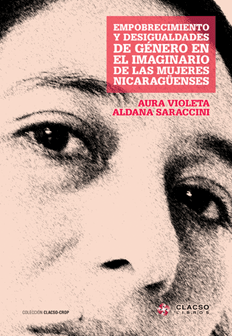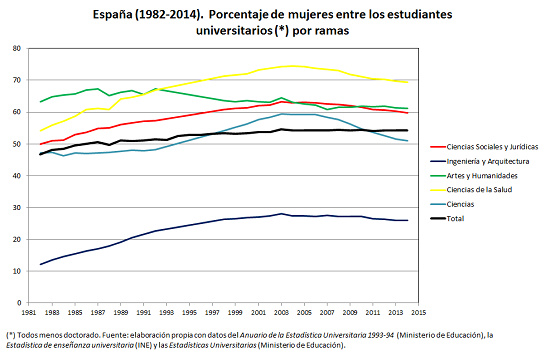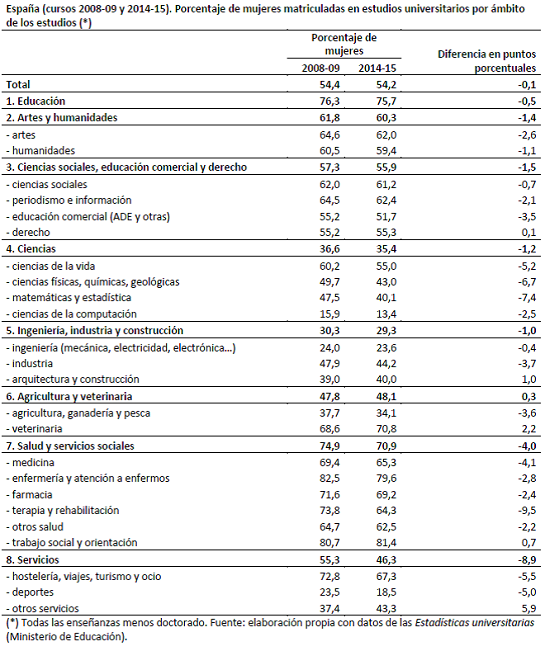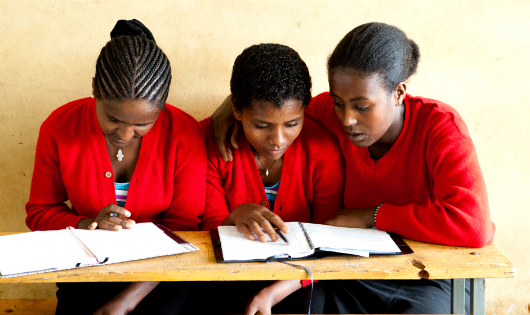Etiopia/Abril de 2017/Fuente: All Africa
Resumen: Para asegurar un crecimiento económico sostenible en una nación dada, el empoderamiento de las mujeres se está convirtiendo en un asunto serio del día. Como la mayoría de los estudiosos han acordado, la educación es una de las áreas más cruciales de empoderamiento para las mujeres. Ofrecer a las niñas educación básica es una manera de proporcionarles mucho más y de permitirles tomar decisiones genuinas sobre las clases de vidas que desean dirigir. Esto parece un lujo pero es una visita obligada. De conformidad con el artículo 28 de la Convención de las Naciones Unidas sobre los Derechos del Niño, los Estados Partes reconocen el derecho del niño a la educación y, con miras a lograr este derecho progresivamente y sobre la base de la igualdad de oportunidades, Educación primaria obligatoria y gratuita para todos; Fomentar el desarrollo de diferentes formas de educación secundaria, incluida la educación general y profesional, ponerlas a disposición de todos los niños y hacerlas accesibles, y adoptar medidas apropiadas, como la introducción de la educación gratuita y la asistencia financiera en caso de necesidad; Hacer que la educación superior sea accesible a todos sobre la base de la capacidad por todos los medios apropiados; Poner a disposición de todos los niños la información y la orientación educativa y profesional; Adoptar medidas para fomentar la asistencia regular a las escuelas y la reducción de las tasas de abandono escolar.
In ensuring sustainable economic growth in a given nation, empowering women is becoming a serious issue of the day. As most scholars have agreed up on, education is one of the most crucial areas of empowerment for women. Offering girls basic education is one way of providing them much greater and enabling them to make genuine choices over the kinds of lives they wish to lead. This seems a luxury but it an absolute must see.
According to Article 28 of the UN Convention on the Right of the Child, States Parties recognize the right of the child to education, and with a view to achieving this right progressively and on the basis of equal opportunity, they shall, in particular: make primary education compulsory and available free to all; encourage the development of different forms of secondary education, including general and vocational education, make them available and accessible to every child, and take appropriate measures such as the introduction of free education and offering financial assistance in case of need; make higher education accessible to all on the basis of capacity by every appropriate means; make educational and vocational information and guidance available and accessible to all children; take measures to encourage regular attendance at schools and the reduction of drop-out rates.
As to article 10(a) of the Convention on the Elimination of All Forms of Discrimination Against Women, they have equal rights with men in the field of education. The same conditions for career and vocational guidance, for access to studies and for the achievement of diplomas in educational establishments of all categories in rural as well as in urban areas; this equality shall be ensured in pre-school, general, technical, professional and higher technical education, as well as in all types of vocational training.
Ethiopia is among states who received and signed the aforesaid two conventions and made them part of the constitution, child guidelines and women policy. According to article 35(3) of Ethiopian constitution; «Considering that traditionally women have been viewed with inferiority and are discriminated against, they have the right to the benefit of affirmative actions undertaken for the purpose of introducing corrective changes to such heritages. The aim of such measure is to ensure that special attention is attached to enabling women to participate and compete equally with men in the political, economic and social fields both within public and private organizations.»
Besides, article 35(8) of the constitution also ensues the right to get education. It says; «Women shall have the right of access to education and information on family planning and the capability to benefit so as to protect their good health and prevent health hazards resulting from child birth.»
No doubt, women who enjoy all fundamental human rights can lead a healthier and happier life. Thus, education in this regard plays an important role in empowering girls. Besides it upgrades women’s power of decision making. The society can get tremendous benefits form educated girls. If, an educated woman has the skills, information and self-confidence she could to be a better parent, worker and citizen.
When the society allows woman to go to school, such a move helps control early marriage and manage family size. And the children of an educated mother are more likely to survive than that of uneducated ones.
An educated woman will also be more productive at work and better paid. Indeed, the dividend for educational investment is often higher for women than men. Studies from a number of countries suggest that an extra year of schooling will increase a woman’s future earnings by about 15 per cent, compared with 11 per cent for a man.
Over recent decades, in Ethiopia, there has certainly been significant progress in girls education. As per the information this writer got from the Ministry of Education, following the affirmative action taken by the government and the sound education policy introduced, the gross enrolment ratio of girls has been steadily increasing year by year.
These days, in Ethiopia, over 26 million students have been attending primary, secondary and tertiary level education. Including pre-school education, currently, over 22.6 million students attend primary education. Of which 10.78 million are girls. The gross enrolment ratio of girls in primary education has reached 106.3 per cent, said Ministry Corporate Communication Director Ahmed Seid.
As to him, in 2014/15, 1.67 million students were attending secondary education, of which 805,549 are girls. The gross enrolment ratio of girls in secondary education has now reached 40.8 per cent. Compared to the previous years, it has shown great progress. The construction of high schools being carried out helps to further increase students’ enrolment in secondary school, Ahmed said.
«Almost half of the students in preparatory schools comprises girls. Citing 2014/15 fiscal year report of the ministry, Ahmed indicated that over 433,439 students had been attending pre-university education, of which, 201,826 were girls. He said various activities are being carried out over the past years to reduce gender disparity. The country is working to bring boys to girls ratio to one to one.»
Of the total 195,640 students who took preparatory final exam by the year 2014/15, 165,000 students had got university entrance pass mark. Due to low intake capacity of universities, 115,680 students have joined government universities. Of the total students, some 38.5 per cent women students had got a chance to join universities. In line with affirmative action, during the reported period, 29,743 girls had joined science and technology fields whereas 14,763 girls are assigned in social science and humanities field of studies, Ahmed said.
According to Ministry’s Gender Directorate Director, Elizabeth Gessese, the ministry had been making various activities to narrow down gender gaps in the Millennium Development Goals(MDGS) through mobilizing the public, increasing woman’s role in education leadership, carrying out various communication works in line with media institutions. Efforts have been made so far to encourage and enthuse girls with high scorers. She also said that in collaboration with the Ministry of Women and Children, her ministry has been providing every assistance to encourage girls.
As to her, affirmative action has also been under way to assist girls. For instance, in pre affirmative action, lowering passing marks, we do various things that help girls join preparatory schools and universities. As part of post affirmative action, we have been clicking with every gender structure which are found under various colleges and universities. We provide every assistance to girls until they complete education successfully. Nowadays, by mobilizing the public and raising awareness of the community, in some areas, it is possible to arrest the number of school dropouts, especially girls. Besides, various assistance has been provided for those who come from the low income bracket.
Early marriage, abduction and house chores on the shoulder of girls,among others, are still ascribable challenges for the attrition of girl students. Here, there is a call for to do more awareness raising tasks to change the mindset of the rural community. Specially the importance of educating girls for social well being is called for, she stated.
According to 2015 report of annual continental activities, the Commission of Africa Union is expected to devise draft continental education strategy for Africa 2016-2025. The strategy will be driven by a visualization of a transformed and integrated African education and training system. A system geared towards the development of knowledge, skill and values for achieving the vision of the Union. Its mission will be to reorient Africa’s training systems to meet the knowledge, competencies, skills, innovation, and creativity required to nurture African core values and promote sustainable development at the national, sub-regional and continental levels, the report pointed out.
The strategy goes along from perspective and minimalist goals of human rights that demand human empowerment through creating enabling conditions to help individuals and nations realize their potential. It sees to the task of delivering better living standards, higher levels of quality employment, entrepreneurship and innovation through establishing robust and dynamic inter-sectoral linkages; while also addressing Africa’s quest for increased capacity and human development capacity, as a key to realizing that common development approach the continent has taken.
The draft strategy demands that education and training programmes be directly linked to national human resource development programmes as well as national socio-economic development visions, it was learnt form the report.
Fuente: http://allafrica.com/stories/201704260910.html
Imagen: https://borgenproject.org/higher-education-ethiopia-falls-short-continues-improve/

















 Users Today : 50
Users Today : 50 Total Users : 35460181
Total Users : 35460181 Views Today : 70
Views Today : 70 Total views : 3418853
Total views : 3418853